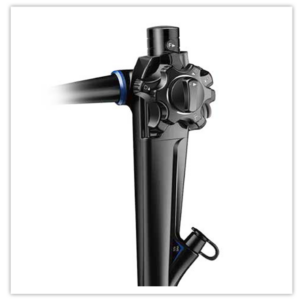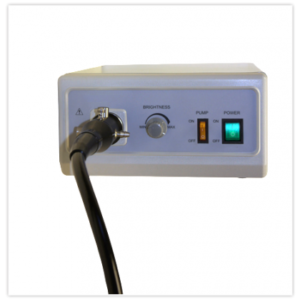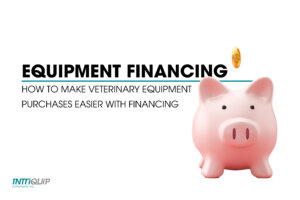Endoscopy Use in General Practice
Once considered a tool of specialty hospitals, endoscopy is a unique opportunity for veterinarians in general practice to expand their services and improve patient care. Endoscopes can be used for both diagnostic and treatment purposes and can add significant value to your practice.
In this article, we’ll discuss the benefits of veterinary endoscopy and how to incorporate endoscopy services into your practice.
The Benefits of Veterinary Endoscopy
From providing increased options for diagnosis and treatment to improving patient care and comfort, endoscopy can be an extremely versatile tool for your practice. Here are a few of the many benefits of using veterinary endoscopy.
• Minimally Invasive Procedures
Endoscopy can play a significant role in improving patient comfort and providing a minimally invasive treatment option. In small animal medicine, foreign bodies are a common problem, and removal typically involves a large abdominal incision. Endoscopy can offer patients a non-surgical option for foreign body removal. This can eliminate the pain associated with abdominal surgery and incisional healing.
While endoscopy can eliminate the need for surgery in some cases, it can also provide a less invasive option for your patients. The demand for laparoscopic surgery in general practice has continued to grow in recent years. Smaller incisions can drastically reduce recovery time and the risk of incisional infections.
• Improved Diagnostics
Another significant advantage of endoscopy use in general practice is the opportunity to provide improved diagnostic services for your patients. Endoscopy allows for better visualization and evaluation of body systems, including the respiratory and gastrointestinal tracts. Additionally, endoscopic tools and working channels allow vets to obtain biopsies and samples during the procedure. These samples are essential for providing an accurate diagnosis and creating an appropriate treatment plan.
• Patient Monitoring and Follow-up Care
While endoscopy is a valuable diagnostic and treatment tool, it can also help monitor treatment and assess patient progress. A great example of this application is the use of endoscopy to monitor gastric ulcers. Endoscopy is essential for visualizing and diagnosing gastric ulcers. However, follow-up exams can provide valuable information about patient progress and guide future treatment decisions.
Incorporating Endoscopy Into Your Practice
As technology advances, veterinary clients expect a higher standard of care for their pets. Incorporating endoscopy into your practice is an excellent way to expand your services and improve the care of your patients.
The first step in making endoscopy a successful part of your practice is deciding what services you would like to offer. Some of the most common uses of endoscopy in general practice include evaluating the upper and lower airway, foreign body retrieval, and evaluation of the gastrointestinal tract. Additionally, laparoscopic ovariohysterectomies and gastropexy are popular alternatives for the more invasive and traditional procedures.
Once you have decided what procedures you will offer, you will need to seek out additional training to sharpen your endoscopy skills. Continuing education courses can help provide a general overview of equipment and techniques. It’s also essential to practice handling the equipment and applying your knowledge. While it may take some time and patience to hone your endoscopy skills, expanding your toolbox helps you become a better doctor and provide the best quality care for your patients.
Another critical step in incorporating endoscopy into your practice is ensuring your staff receives the proper training for setting up and cleaning the equipment. This can be an essential factor in reducing maintenance issues and improving the longevity of your scope.
Equipment Considerations
An endoscope is a significant investment, and it’s essential to do your research before making the leap. When evaluating different systems, there are a few key things to look for and consider. Here are a few endoscope equipment basics.
• Diameter and Length
One of the most important considerations in purchasing an endoscope is determining which diameter and length will be best for your patients. Your needs may vary depending on the species you are treating and the services you wish to provide.
• Rigid vs. Flexible Scopes
Rigid scopes and flexible scopes are the two main categories of endoscopes. Rigid scopes move on a vertical axis, while flexible endoscopes offer greater rotation and maneuverability.
While these two scopes have different uses, they also have different price points and maintenance needs. It’s a good idea to get experience with both scopes to determine which one you are more comfortable with and which one will better fit your patient’s needs.
• Components and Accessories
In addition to the scope itself, there are also a variety of components and accessories you may need. A light source is a critical part of any endoscope system. Many light source units also contain an air pump and irrigation system, necessary for improved visualization and performance. A suction system is also required to remove excess air and fluid during the procedure. The components and accessories available may depend on the type of endoscope you are purchasing.
• Portability and Space
General practices offer a wide range of services, and creating space for new equipment can be challenging. It’s critical to consider where the equipment will be used and stored. Designating the appropriate space for your endoscopic equipment can improve its longevity and prevent maintenance issues due to accidental damage.
For large animal practitioners, it’s also essential to consider the portability of the endoscope and any additional monitors or equipment required for your procedures. If you provide services on the farm, you want to ensure the equipment is easy to transport and set up.
At Intriquip Instruments, we offer a full range of veterinary endoscopes and accessory equipment. Our Vet-OR1200 series offers several lengths and diameters to meet the needs of both small animal and large animal patients. With their sleek design and extended length, our endoscopes allow you to perform a wide variety of procedures, including:
• Upper and lower gastrointestinal endoscopy
• Tracheoscopy
• Rhinoscopy
• Pharyngoscopy
• Laryngoscopy
Additionally, the OR1200 series provides large working channels for biopsy and sample collection. This can help improve the quality of your sample and help you obtain an accurate diagnosis.
Summary
Incorporating endoscopy into your practice can be a great way to expand your services and provide a higher level of care for your patients.
Before investing in endoscopic equipment, it’s important to understand what to look for and the benefits of different systems. Our team at Intriquip Instruments is proud to offer a variety of veterinary endoscopes to meet your practice’s unique needs. If you are ready to purchase or are interested in learning more, please reach out and let us know how we can help.
-

Mobile Portable Endoscopes
-

VET-OR1200 Series Imaging Processors
Select options This product has multiple variants. The options may be chosen on the product page -

VET-OR1200 Series Endoscopes
Select options This product has multiple variants. The options may be chosen on the product page -

Endoscopy Light Source LS-150



